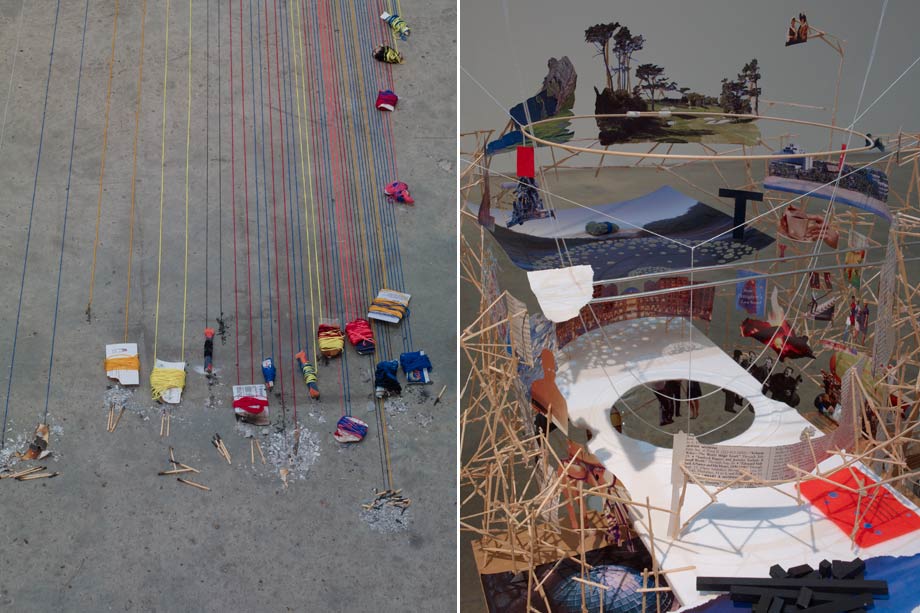
William Kherbek reviews Sarah Sze’s solo exhibition, hotly tipped for London show of the year
The French philosopher and sociologist Bruno Latour is famous for proposing a concept called a “Parliament of Things” in which inanimate but critical aspects of the world — say the ozone, or the Amazon rainforest — are given voices in a political forum. It’s a bit of a wooly idea; the image of politicians gathering together to decide how trees might think doesn’t inspire confidence, but Latour’s idea has a nice laterality to its intellectual appeal. It’s a concept you think about for a while, and one day will disappears from your consciousness. Then, in an instant, it can come back. As I walked around Sarah Sze’s massive, intricate installation in the upstairs of the Victoria Miro Gallery, it felt like Latour’s idea had at last been realised.
The work consists of hundreds of objects, tools, photographs, clay figurines, electronics, arrayed in a kind of ellipse that evokes the layout of national parliaments or sports stadia. Over the whole assemblage swings a pendulum, at times it seems threatening, at other times its precariousness reads like the assured testament of a carefully plotted society reflecting on itself; look at how well everything fits together. Though it doesn’t involve sound, there is an almost symphonic quality to the piece, it is so integrated and almost inevitable. You could literally spend hours looking at. For all its incongruousness, it is a strangely organic thing — there’s nothing natural about it, but somehow it feels like it could have just sprouted in the space like toadstools after a storm.
For those who don’t know Sze’s name, don’t expect that to last. Chosen by the United States to represent the country at the 2013 Venice Biennale, her second solo show at Victoria Miro is a bold statement of purpose, indeed it is a strong contender for London’s best show of the year. What is particularly excellent about Sze’s sensibility is her capacity to be comprehensive without being exhausting. The numerous pieces in the gallery’s ground floor space take in massive themes, creativity, ecology, astronomy, and yet they avoid arrogance or pretension.
In one work, what looks like a diorama of tiny workshop is nearly enveloped by a folded piece of paper; rarely has work evoking the art studio been so light of touch but so true to life. In another piece, threads extend from metallic nests mounted on the wall down to the floor. Seeking their ends, you find carbonized business cards, identity documents and other detritus of modern business socialising. Sze’s masterful use of materials keeps such weighty ideas as the formation and performance of identity in a corporate society from ever becoming ponderous. There are several thread works in the ground floor space and they have an almost Calder-like vibrancy about them. There are nice inversions in a number of works as well; two desk lamps shine on photographs of patches of daytime and nighttime sky in one work, evoking the presence of the sun and moon but also obscuring their own light, rather like self-contained eclipses.
Sarah Sze’s solo exhibition runs 20 June-11 August at the Victoria Miro Gallery, London




